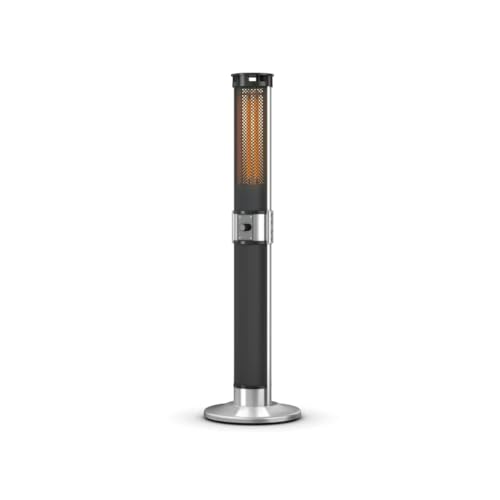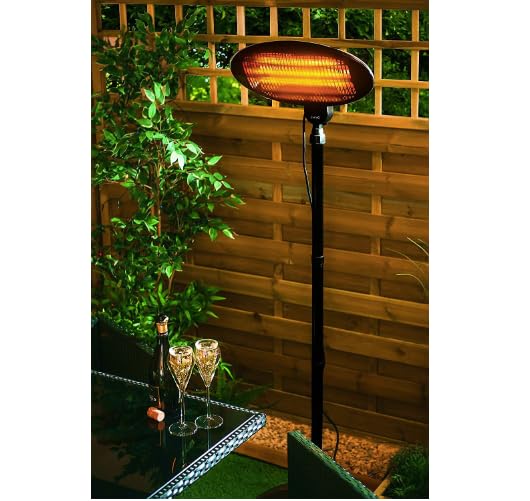
Patio Outdoor
gas patio heater outdoor Heater

A patio gas heater is a simple and simple method of adding heat and ambience to your outdoor space. The devices make use of liquefied petroleum gas (LPG) to generate radiant heat that warms the area around them in a similar way as sunlight.
Propane patio heaters require a refillable tank.
Safety
Patio outdoor gas heaters are becoming more popular in both restaurant and home settings to heat an outdoor patio or other open space. While these devices offer convenience and comfort, they also present some safety hazards if not properly used or maintained. Always read the instructions of the manufacturer and adhere to all applicable laws and regulations when using a gas-powered patio heater.
Gas patio heaters are designed to heat outdoor areas up to 215ft2, making them a good choice for large, well-ventilated spaces. Many models have a timer and remote control for easy operation. Natural gas patio heaters need to be connected to the gas line of a home, while portable propane models can be operated by an internal propane tank.
In the initial setup, it is important to ensure that all connection points are secure and leak-free. This can be done by applying a solution of soapy water to the gas tank's connections and hoses. If you notice bubbles or smell gas and gas, turn off the heater. Tighten the connections. It's recommended to have your gas heater serviced by a professional prior to use.
Don't leave a heater on the patio unattended or close to things that ignite, like curtains, furniture, or rugs. The extreme heat of a patio heater that is powered by gas could cause an explosion. Keep all flammable materials away from the heater. Do not place it on the surface that is uneven.
Check that your gas-fired heater has tipover switches. This will cut off gas flow if it tilts by 15 degrees or more from its vertical location. This feature is especially useful for patios exposed to wind that could tip the unit.
A carbon monoxide detector is a useful safety addition to any patio, since it will warn you if harmful carbon monoxide is detected in the air. Carbon monoxide poisoning is a severe condition that can cause headaches, dizziness and fainting. It is therefore essential to check and maintain this detector regularly.
When not in use, a
patio outdoor gas heater must be stored indoors. If you leave it outside, it may develop issues such as clogged gas lines and rust. It is recommended to cover your patio heater when not in use to protect it from insects and other debris.
Ease of Setup
patio heater gas flame heaters make outdoor living spaces warm and inviting when temperatures drop. They're a simple and inexpensive method to prolong the time you spend enjoying your yard, garden or other outdoor spaces. Gas patio heaters are available in a variety of styles, including freestanding and tabletop models. You can choose between propane or natural models, or even a model with the appearance of stone, hammered brass or resin wicker.
It is important to know how much heat is needed to accommodate the amount of guests you usually entertain before you decide on the style. This will help you determine the amount of power a patio heater you should purchase and which type of fuel is most suitable. You can determine the amount of BTUs required by multiplying your area's cubic footage by a 23 degree increase in temperature.
If your outdoor space is well ventilated, a natural gas patio heater might be the perfect choice for you. These hook directly into the existing natural gas line and are more affordable to run than propane models. They are not as easily transportable, and require extension hoses that can cause a trip hazard when not in use.
A propane-powered patio heater can be an excellent option for many homes. These have an impressive heating capacity of up to 250 sq. ft. and offer a range of safety features. These include an anti-slant design that shuts off the burner when the unit tilts more than 47 degrees. These models come with a built in propane tank level gauge as well as adjustable flame settings to fit different seating configurations.
Gas fire pits are a popular option for heating your patio. They provide the same comfort and ambience as a fireplace that burns wood, however, they also have the added benefit of being clean, convenient and efficient. They are available in different styles and are great for dining, entertaining and relaxing. Some have a protective cage to protect pets and children from burning. Some have an internal spark igniter that allows for rapid lighting.
Convenience
Patio outdoor gas heaters allow you to use your balcony, deck, or porch all through the winter. Radiant heat is used to warm the air. It has an engine that burns natural gas, liquefied propane or any other fuel, and then directs the flame against a reflective hood. The hood is silvered to reflect heat upwards.
You can select from a wide range of sizes and models depending on how much heating you'd like and how many people will be gathering around the heater. Certain models come with an electric igniter to make it easy to light the flame, while others require that you use an external lighter, such as a match or a barbecue lighter. If you are using gas patio heaters it is crucial to have a fire extinguisher nearby in the event of an accident.
Each model has a specific BTU rating that relates to its capacity to heat a space. The more efficient the BTU rating, the greater the area you're looking to heat. If you are unsure check the specifications of the manufacturer.
Propane patio heating units are popular because they can be found at all gas stations and convenience shops. The downside is that you must purchase individual tanks, and the total price is slightly higher than for an electrical patio heater or
natural gas patio heater.
When you install a gas patio heater, you can choose to install it overheard or fixed to the wall. If you opt for the alternative, a professional installer must run a natural gas line from your main water or gas supply. This type of outdoor heating is also ideal when you reside near the sea, as it will resist the effects of corrosion and harsh environments.
Make sure to place your heater on an even surface. If you place it on an inclined surface the heater could slide over and create a fire hazard. It is also crucial to check regularly for gas leaks by applying a soapy water solution to all connecting points. If you see bubbles anywhere in the heater, switch it off and call a professional for repair.
Cost
There are a variety of options for heating outdoor spaces, ranging from gas fire pits and patio heaters to other types. The type of heater you choose will depend on a variety of factors, such as the amount of heat you require and the type of ambience you're looking for.
Electric patio heaters are a great alternative if you're looking to keep your guests warm at the lowest cost. They are easy to install and operate and do not require professional installation. Alternatively natural gas patio heaters are long-lasting fixtures that are connected directly to the natural gas line of your home and can provide a full range of heat. Since they don't make use of propane tanks, you never have to worry about running out of fuel, and you can organize parties without worry.
A chimenea is a different low-cost alternative that is ideal for those who prefer a traditional fireplace with wood. The heaters are powered by a burner which burns propane, LPG, or natural
gas patio heater sale. They also incorporate a reflector to direct the heat to the patio. They are not recommended for use in enclosed areas as the open flame can create a fire risk and could cause carbon monoxide poisoning.
Portable patio heaters, including propane and natural gas are available. You can move them to the ideal spot. You can also buy an installation model that is permanently attached to a wall or post that will remain in place, but be certain to employ an expert for this kind of job. Natural gas patio heaters tend to cost more upfront, but they provide the benefit of being connected to the gas line in your home and eliminating the need for propane tanks.
The cost of a patio heater will also differ based on its size and quality. Some heaters are as low as $100, while others cost more than $500. No matter what model you pick, it's essential to properly store your unit when it's not in use. This will prevent issues like clogging and rusting, and can extend its lifespan.

 Patio Outdoor gas patio heater outdoor Heater
Patio Outdoor gas patio heater outdoor Heater A patio gas heater is a simple and simple method of adding heat and ambience to your outdoor space. The devices make use of liquefied petroleum gas (LPG) to generate radiant heat that warms the area around them in a similar way as sunlight.
A patio gas heater is a simple and simple method of adding heat and ambience to your outdoor space. The devices make use of liquefied petroleum gas (LPG) to generate radiant heat that warms the area around them in a similar way as sunlight.